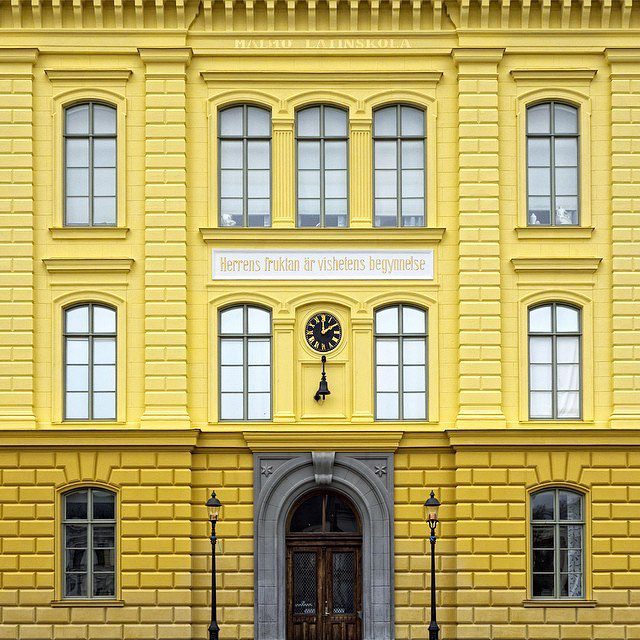Baltimore, Maryland, United States
Wyman Estate Gatehouse
Formerly the public entrance to an estate, this gatehouse has served as the headquarters of John's Hopkins' student newspaper since 1965.

Photo Credit: Marcus Wallinder
“Malmö Latinskola,” or Malmö Latin School, was founded in 1406, when Pope Innocentius VII issued a “letter of privilege” to the citizens of the town. Fast forward a few hundred years and it is today a thriving upper secondary school with roughly 1,000 students. As suggested by the six name changes that have taken place since its opening, Malmö Latinskola is a flexible institution, noted for its endurance, advanced learning, and frequent renovation to its building’s structure and design.
That innovation is an apt reflection of Malmö itself. As Sweden’s third-largest city, this growing cosmopolitan area is distinguished by its happy marriage of longstanding tradition and cutting-edge experimental art and development. The city has undergone a renaissance, as exemplified by bold architecture and changes to everything from the minuscule to the monumental.
Crouch down to marvel at two mouse-sized, mouse-targeted establishments: Noix de Vie (Nuts of Life) and the adjacent restaurant Il Topolino (Mickey Mouse, in Italian). Each storefront measures about 1 foot by 2 feet. The former has piles of carefully displayed nuts in its window. The latter displays a typical red-and-white awning and matching checkered tablecloths with a tiny menu on the wall listing a selection of cheese and crackers. These curious masterpieces are the work of the artist (or collective) Anonymouse MMX, who crafted both with materials like matches, buttons, caps, lids, and stamps—all of which mice would be able to use to build such fine enterprises.
But the most dramatic marvel of modern engineering, which has altered the physical and cultural landscape of this unique Swedish city, is the Øresund Bridge—a nearly 5-mile road and rail bridge that is the longest in Europe and as of July 2000, connects Sweden to the Danish capital of Copenhagen. Looking out the window from Malmö Latin, the sweeping suspension bridge appears to lose interest in the distance, gradually bending beneath the water. And indeed it does. As construction and traffic would have interfered with the high levels of activity at Copenhagen’s International airport, the nearly tenmile span was divided into three sections: a bridge, a man-made island (Peberholm), and a tunnel dug beneath the strait on the Danish end.
Connecting Sweden to the rest of Europe in this way has resulted in an increasingly diverse, dynamic, and youthful city, where over 150 languages can be heard along its quickly developing streets.
Malmö Latinskola has kept pace, completing a new auditorium in 2014, where students can enjoy lunch while watching a rock concert, a consequential international broadcast, or collectively listen to an engaging podcast. The school pays for each student to have a laptop and encourages specialization and an interest in experimental disciplines. And, perhaps not to be outdone by the masterwork that is the Øresund Bridge, in 1999 the formerly white school decided to distinguish itself with a fresh coat of paint: its current unmistakable bright mustard hue.

 55.602269, 13.007771
55.602269, 13.007771
Need an account? Sign up
This site is protected by reCAPTCHA and the Google Privacy Policy and Terms of Service apply.